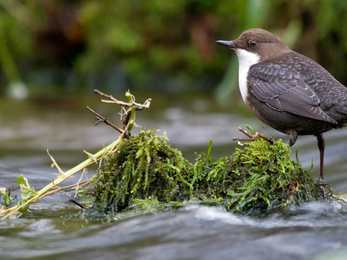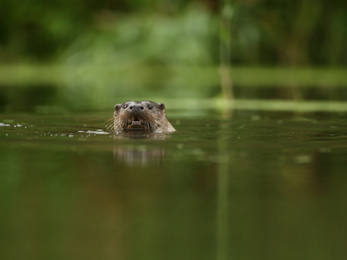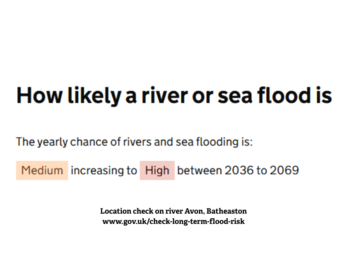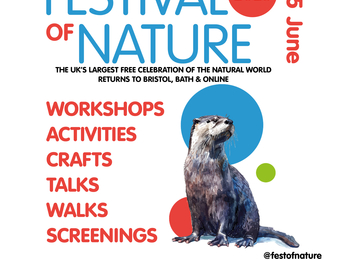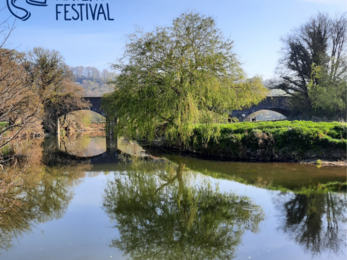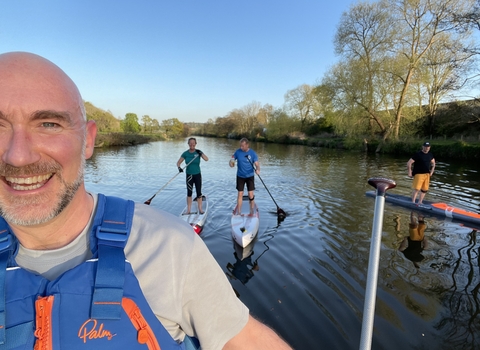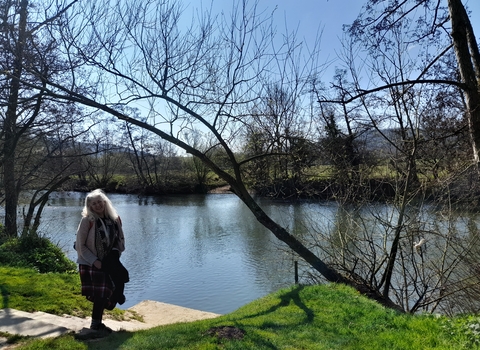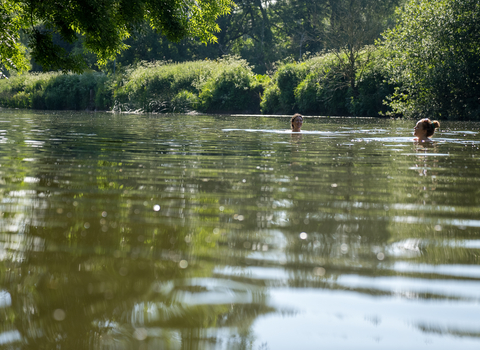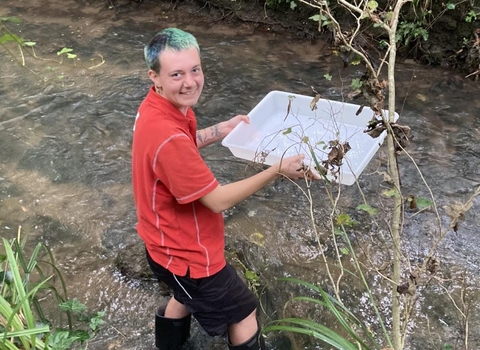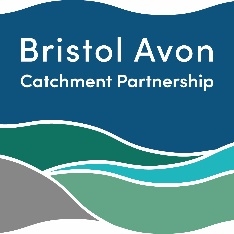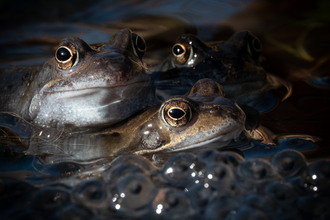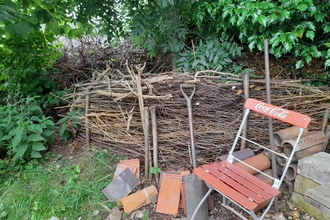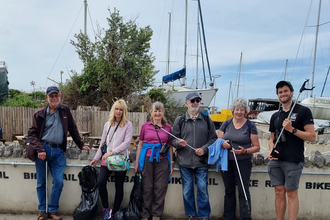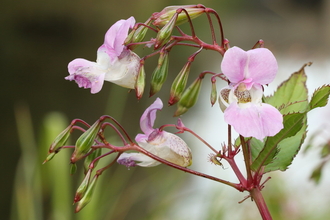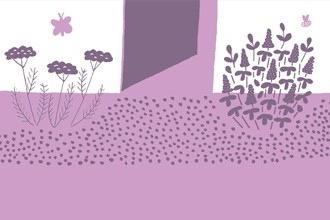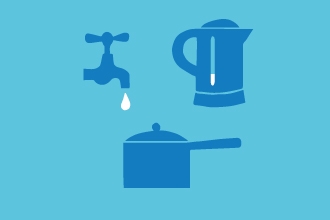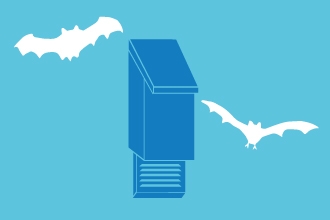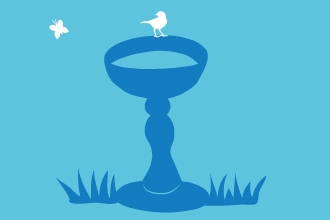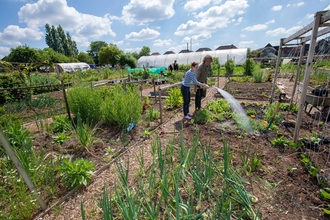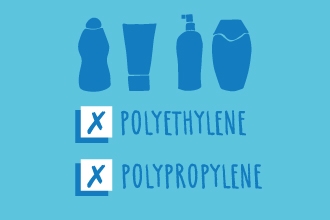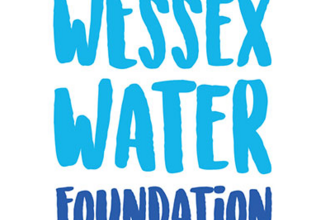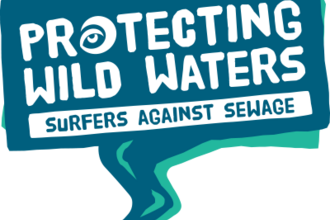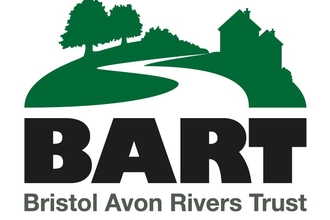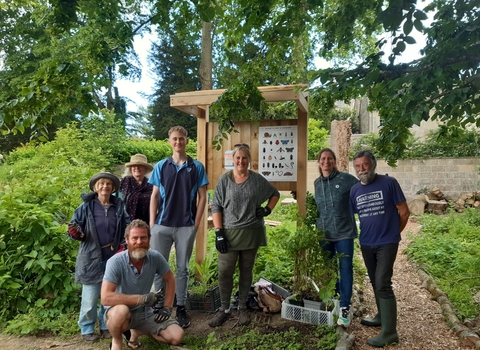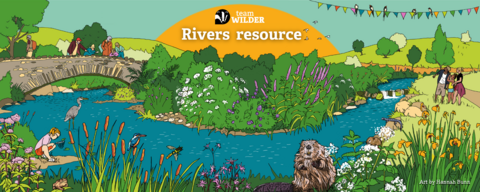
Hannah Bunn
Water is life!
River Avon community groups and organisations raised their concerns and shared actions they take for nature on the river to protect habitat space along the waterside.
Rivers are essential habitats for a large proportion of our wildlife, including beavers, otters, water voles, beautiful birds such as kingfishers, dippers, little egrets and grey herons. Plus a huge variety of fish, invertebrates and amphibians. Native wildflowers, trees such as willow and aquatic plants work in harmony with each other.
Rivers, streams and brooks are places to go to boost your wellbeing physically and mentally, connect with nature and recharge your batteries whether you walk, swim, paddleboard or picnic. This natural and beautiful countryside offers a nicer, friendlier pace of life away from busy roads and urban areas.
The state of our rivers
River habitats are essential to support diverse and fragile ecosystems, which relies on clean, running water. Polluted water has a direct effect on people, businesses, agriculture and the water cycle locally and globally. This is why urgent action is needed and how locally community groups, individual actions and local and national policies need to support the health of our local rivers.
Access to local rivers should be for everyone and also encouraged, by opening up pathways, offering opportunities to connect with waterways and re-naturalise these important green and blue spaces. The more people engage with the river environment, connect with nature and see and understand the importance of freshwater habitats, the more likely action will be taken to address these issues and protect our local rivers.
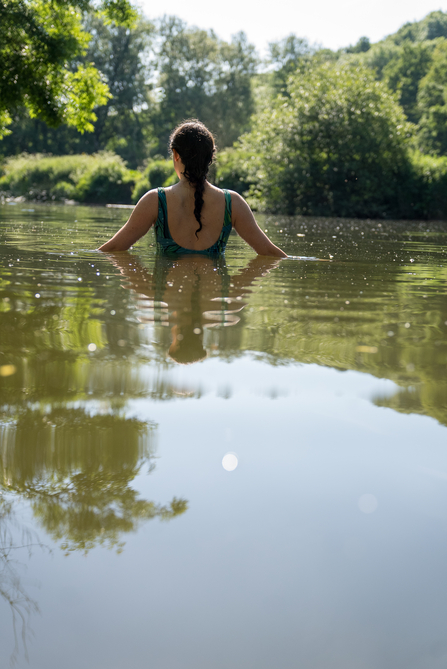
Charlotte Sawyer
Rivers can also be home to large amounts of dumped litter, pollution (sewage, agriculture, run-off, dog flea treatment etc), plastic, damage to the river banks (erosion from water, people, wildlife etc), INNS (invasive non-native species) and dangerously high levels of contamination. Only 14% of river water bodies in England had good or high ecological status in 2016 and 13% of England’s freshwater and wetland species are currently at risk of extinction.
Add factors such as housing development in and near floodplains, straightened river channels, the ecological emergency with reduced biodiversity and climate crisis with increased flooding and drought risks, then a bleak picture is painted.
Taking action and local issues
But not all hope is lost, the good news is that actions can be taken to tackle these problems and ease eco-anxiety and climate change factors. River conservation involves looking at the entire river system, working with local authorities, organisations, community groups and individuals to make changes and take action to benefit people and wildlife. This is a Catchment Based Approach.
This resource is designed to educate and address the pressures on freshwater habitats, celebrate engagement with our rivers and show how important community actions are to make a difference. We can all contribute to positive change for our local blue spaces. After speaking with local community groups near Bath, the following issues were raised:
- More pollution and plastic in the river, especially visible when the water level rises after heavy rainfall.
- Increased flooding events occur more often with dryer summer and wetter winter months, a direct effect of climate change.
- Concerns about wildlife habitats near the river and noticing less species on the river.
- Concerns about water safety when more people visit the river for recreation.
- Eco anxiety.
These local issues motivated action to be taken to make a difference.
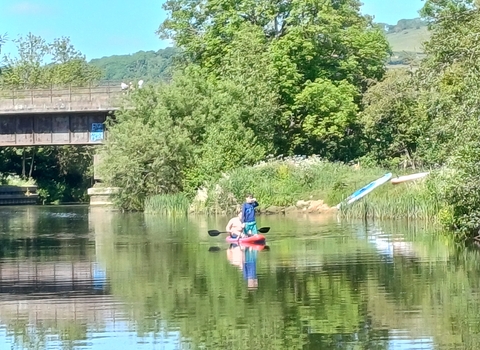
Sophie Bancroft
Actions taken by community groups near the river
Observed local changes to the River Avon by the community:
- More pollution and plastic in the river
- Increased flooding events
- Concerns about wildlife habitats near the river
- Eco anxiety
Concerns about water safety
Leading to community actions to make a difference:
- Community events for engagement, education and connection to the river
- Actions to take at home
- Water quality measurement and reporting
- Invasive non-native species awareness (INNS)
- Citizen science to collect evidence
Litter picking and river cleaning - Campaigning
Nature based solutions GO WITH THE FLOW
Working with nature to improve river health and bring wildlife back. Wetlands, tree planting, leaky dams to allow the catchment area to hold more water, slow the flow and reduce drought. This also creates important habitats for wildlife. We need to be more like beavers!
Our river channels have been straightened and moved to favour house building and development, but this speeds up the flow of the water making drought more likely to occur.
Climate change can be mitigated with healthy rivers....
Climate mitigation is about creating, allowing and encouraging habitats along rivers. The big reward here is to stabilise river banks with native species, which will in theory reduce erosion, improve biodiversity and slow run-off. The increased loss of wetland habitats and sections of the river has had a dramatic effect on local biodiversity.
Climate adaptation – Natural Flood Management (NFM) is working with nature rather than hard engineering against it. The role of communities here is vitally important to help create green and blue corridors to bring back nature locally. Increasing biodiversity will create better natural ecosystems.
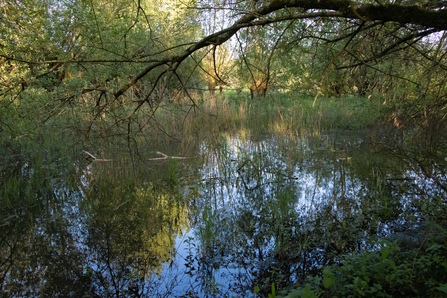
(c) George Cook
Flooding
Flooding risks
The likelihood of flooding, especially near the coast and river channels and the coast is increasing. Climate change has seen more localized impacts here in Avon, in terms of wetter winters and dryer summers which is predicted to continue. Examples shown below are on the River Avon, Bath.
Extreme weather events are also predicted to increase in frequency, which directly impacts the soil moisture deficit (SMD). Prolonged dry periods can compact soils making them harder and reducing their ability to absorb water. Therefore when we get heavy rainfall on dry, compacted soil, it is harder for the soil to absorb the water causing increased surface runoff and potential flash flooding. Paved over gardens and fake grass also reduces water absorption, as well as other reduced vegetation due to INNS and erosion. Increased waterflow to local rivers and streams overwhelms their capacity.
BANES council have flooding advice about flood and weather warnings, flood risk management, alerts, long-term flood risk, council duties, preparing for and reducing the impact of flooding and guidance for planners and developers.
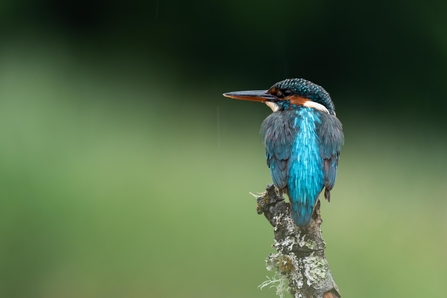
Thinesh Thirugnanasampanthar
Engagement is key to connection
Engagement and listening with local people is key to encourage protecting the river, sustainable food growing and wildlife friendly practices. Instead of telling people to change, these events bring people together through enjoyment, pride and appreciation of the area, providing opportunities to connect with nature, raise awareness of well-being benefits, celebrating the beauty and inspire action to help protect the rivers ecology.
Tales from our Riverbank: Co- existence in the River Avon linked with Grow Batheaston, hold a lot of events to appeal to as many people as possible. Some examples includes talks, celebrations, film, art and practical river cleaning and litter picking. School workshop engagement reaches not only children, but their families and teachers linked to the school community. Grow Batheaston also run art trails, forest gardening, meadowfest, wildlife clubs, community planting, football clubs and markets.
The Bath River-line project aims to improve the riverside experience, with improved access, biodiversity and community engagement along the River Avon, creating a more welcoming and vibrant space for residents and visitors alike. The Green Park entrance has been opened up and the paths are being resurfaced to improvement accessibity in all weather conditions. Areas along the river path will have new features, such as:
- viewing area's along the river path.
- a Sustainable Urban Drainage (rain garden) and seating area at Midland Bridge.
- enhanced pollinator planting.
- a community mural to replace graffiti, undertaken by young people.
The Festival of Nature is the UK’s largest free celebration of the natural world – with a water theme for 2025. A week of in-person and online events for all ages, with film screenings, guest appearances, arts and crafts, experiments, screenings, walks, talks, tours, exhibitions, music and more. Discover the importance of water spaces and water journeys, big and small, in supporting nature, biodiversity and the natural world. We’ll dive into all the ways you can turn inspiration into action, to help you to protect our precious water habitats, on a local and national scale. There are over 70 community events taking part, bringing nature to as many neighbourhoods as possible.
The Wild Water festival is a diverse mix of river-themed community events, celebrating the River Avon, but also drawing attention to the pressures on it from both climate change and loss of biodiversity. The communities involved are those along the river from Bradford on Avon to Batheaston as well as Box and Colerne on the By Brook. Events take place up and down the valley during the festival from art workshops, to walks, talks, film screenings, music events and more. The co-ordinators of this grass roots festival are both climate and nature group leads of their respective parish councils.
“We are so excited to see how this festival has been developing through the committed energy of so many local people and their communities. They all care passionately for this place and its river and are stepping up to engage many more people to also stand up for the river and the life it gives”. Elli Bate and Richard Mann.
Actions at home
All actions for nature make a big difference, collectively and will make a difference to local waterways. Here are a few ideas:
- Be mindful of what goes down the drain. Oil, chemicals, some cosmetics, soaps, washing-up liquids and cleaning products can be harmful to wildlife with long-lasting effects. Learn more about microbeads and plastics to avoid.
- Wash clothes at 30 degree's to reduce carbon emissions and use eco-friendly detergents (phosphate free) for cleaner rivers and sea's.
- Ony flush the 3 Ps – poo, pee and (toilet) paper.
- Save water - install a water butt and conserve water with everyday tasks.
- BART say to check for misconnections at home – properties usually have two sewer pipes: foul sewer (toilet, bathroom, kitchen meant to go to sewage works for treatment) surface water sewer (rainwater from roof straight to river).
- Litter pick when out and about. Obviously don't drop litter!
- Share wildlife sightings near the water to raise awareness of species and natural beauty.
- Report pollution to the Environmental Agency (0800 807060).
- Join a local community group taking action fro nature on the river.
- If you have a garden, there are many actions you can take, no matter the size of the space:Limit concrete and plastic coverings so that rain water is absorbed naturally, Wildlife gardening.
- Chemical free gardening and food growing, working with nature.
- Join or start a community group to help protect your local waterways.
The UK is ranked as one of the worst countries in Europe for water quality, with pollution beyond legal limits caused by a toxic cocktail of sewage and agricultural pollution. Currently, 40% of waters fail quality targets due to pollution from agriculture and land management and in 2022 alone, raw sewage was discharged into waterways over 300,000 times.The Wildlife Trust
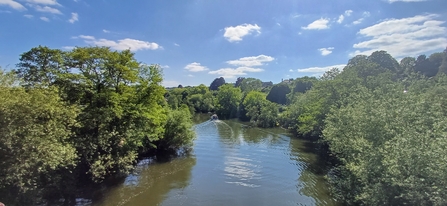
Sophie Bancroft
Checking water quality and citizen science in action
Water quality is an important factor regarding recreational use of the river and has been raised by all community groups. Recording water quality data is a powerful action for nature that makes a difference, showing hard evidence in changes over time.
A good way to get educated and involved in checking water quality is to become a River Detective, ran by BART (Bristol Avon Rivers Trust). This programme monitors water quality of local rivers on a long-term basis and is funded by Wessex Water, Bath & Northeast Somerset Council, Bristol Water, and the Bristol Avon Catchment Partnership. It invites local volunteers to get involved and make a difference by providing data that illustrates and proves the overall health of the river catchment.
For more detailed information about water quality, guidance on a rivers ecological status is overseen by the Environment Agency. DEFRA share river metrics via the catchment data explorer. This contains the most recent water quality data.
Conham Bathing group are a group of local swimmers and are campaigning for water quality enhancement of the River Avon. They have some very useful links on their website about how much sewage is in the river right now, water sampling reports, public surveys, useful information about their council debate and bathing water status. Find out more and get involved.
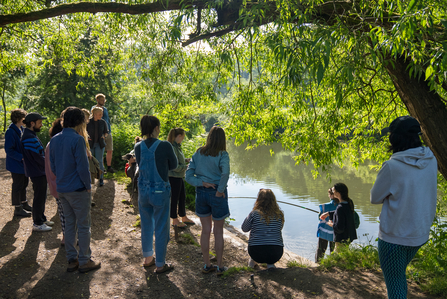
Charlotte Sawyer
Wildlife surveying is a great way to raise awareness of what wildlife is in the area and sharing sightings increases interest and chances of protecting local habitat spaces. Surveying can also be called a bioblitz or citizen science. It can be done as a group on individually. Apps like inaturalist make surveying accessible, fun and easy for people to get involved with – the app makes suggested species identifications and uses the data for national records, but settings must be changed to make the data useful.
Anyone can take part in citizen science and take real action to ake a difference to help protect local rivers now and in the future. Many local community groups will hold regular wildlife monitoring sessions to get started with. BART and Surfers Against Sewage support water quality testings.
Citizen Wildlife reporting resource
iNaturalist advice and Facebook groups
Invasive non-native species (INNS)
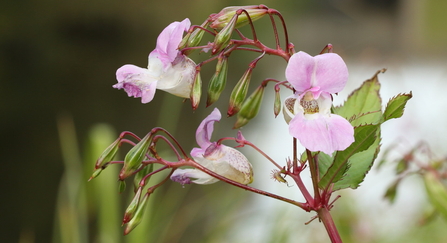
Vaughn Matthews
Invasive non-native species (INNS) can be a plant, animal, fungus or algae that is not indigenous or native to a particular area. They can cause great environmental and economic harm to the area by upsetting the natural balance. On the river, INNS can clog up waterways, reduce water quality, cause erosion, increase the threat of flooding and threaten native species that support and harmonise with the local river ecosystem. INNS to be aware of:
Himalayan balsam
Floating pennywort
Hottentot fig
Giant hogweed
False virginia creeper
Water primrose
Broadleaf watermilfoil
Your local community group may hold events to limit the spread of INNS, get involved!
Invasive non-native species guide - written by the Team Wilder Community Ecologist
The ‘Check Clean Dry’ campaign, as used by Paddle Avon, is important for a number of reasons when people or items such as paddle boards or fishing equipment enter the water. Even a tiny drop of water can carry a new species. It’s good to be aware of what to look for as it isn’t always obvious.
- - Good practice for upkeep of equipment
- - Stop the spread of INNS, especially when going to new locations.
Water safety
Public bodies are very cautious about declaring any open water/bathing water “safe” as there are many risks. Conham Bathing have applied to gain water bathing status, but have been rejected.
- Water quality
- zoonotic disease
- currents and flow
- hidden objects
- risk of injury and drowning
Designated Bathing Water Status is not easily granted as there is a risk and expectation about water quality. If an area has this status, it is officially recognised as a wild swimming area, meaning that comprehensive and regular water quality testing is carried out on a regular basis. Signs will display the water quality results, giving people essential information to make an informed decision about bathing or paddling in the water.
To gain this status, local organisations will need to form a steering group comprised of local community groups (social, swimming, special interest, recreational etc), individuals, the council, local parish councils, the Environmental Agency, Natural England, water company (e.g. Wessex Water), wildlife organisations, local MP representation, Chamber of Commerce and National farmers union representatives. This way evidence and actions are united and shared to achieve the common goal.
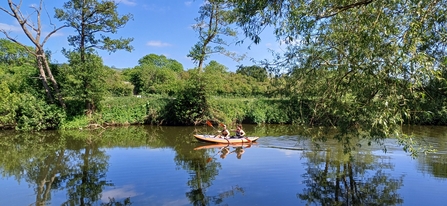
Sophie Bancroft
Campaigning
Campaigning peacefully and creatively is a great way to take action and spread awareness of the issues on the river. Conham Bathing shared their ways of campaigning:
- Citizen science! Take action yourself and provide real data, to inform swimmers/visitors and provide hard evidence that action must be taken to prevent further damage to the river ecosystem.
- Rights of the river.
- Petitions! For councillors and water companies to change their policies, Conham Bathing group gained unanimous support from all political parties to take action against river pollution.
- The press tend to share news when sewage is high. Once in Conham e-coli was 20 times higher than safe measurement levels. This was during a storm overflow.
- Marry the river! Gained local and national coverage on breakfast TV and media. Gets people’s attention to give message and gain more support.
- Hold a pilgrimage! We Are Avon.
- Mermaid – swam the Bristol channel and engages with local schools to spread the message in a creative and memorable way.
- Hold events – bring people together through engagement and connection to the river. Power in numbers.
- Puppets!
- Film creation: Rave on for the Avon by Charlotte Sawer (founder). This film showcases citizen science in action, personal stories of how the river has helped mental health issues, interactions with the council and the sheer beauty and importance of the river.
Learn more about the Team Wilder case studies featured
Specific site reports, recommended actions, more advice, information and pictures about the amazing community groups featured and how to get involved.
Find a community group near you or upload our own group to the Team Wilder Community map.
Case studies featured from this resource are linked below and have more detail about their connections with the River Avon, positive changes made and attempted (it's ok when things don't always go to plan) and how frehwater habitats and river corridors are immensely important. Community actions make a huge difference to local rivers and by joining actions for nature together, we create a stronger voice, with greater confidence and power to make further changes.
Team Wilder Community Campfire: rivers, 09.06.25 (https://youtu.be/UV20MzFrQ_c?si=_tEd3XBdgO2UWitH)
Team Wilder Community Campfire
Hear from all of the speakers in this resource based around the River Avon, as well as Amie Cook, community ecologist. All sharing their concerns, observations and actions for nature. Inspirational, heart-felt, informative and real.
Resources
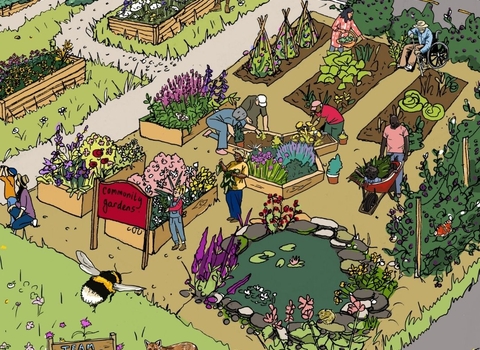
(C) Hannah Bunn
Be part of Team Wilder
All actions for nature collectively add up and creates life for people and wildlife.
Share your actions for nature, like Tom by sharing and tagging @avonwt on social media and
Log your actions for nature on the map

